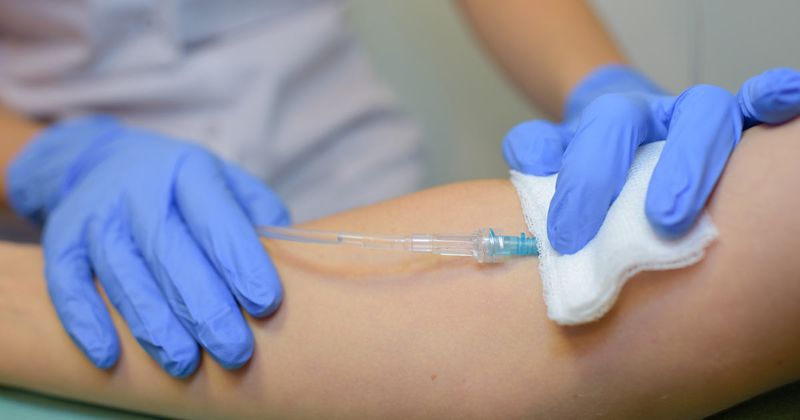Patients with history of skin reactions to heparin tolerate IV administration
Patients with an allergic inflammatory skin reaction to subcutaneous heparin generally tolerated IV administration of the medication, according to a study published in The Journal of Allergy and Clinical Immunology: In Practice.
When patients with a suspected or diagnosed delayed-type hypersensitivity (DTH) to heparin are having an emergency, open heart surgery or hemodialysis, they can take the drug via IV, Axel Trautmann, MD, of the department of dermatology and allergy at the University Hospital Würzburg in Germany, and colleagues wrote in the study. DTH responses typically include inflammatory skin reactions confined to the injection site manifesting within a few days after the beginning of subcutaneous injections.

The researchers examined the medical histories and test results of 50 patients recruited at their allergy center between January 2004 and July 2021 who had a diagnosis of allergic heparin hypersensitivity confirmed via skin testing or subcutaneous challenges. Subcutaneous challenges for the patients with DTH used UFH, low-molecular-weight heparins (LMWH) such as nadroparin, dalteparin (Fragmin, Pfizer) and enoxaparin, and the synthetic penta-saccharide fondaparinux, which the researchers called a suitable alternative to heparin for subcutaneous anticoagulation in more than 90% of cases.
Each patient with a confirmed heparin DTH was offered IV challenge testing with unfractionated heparin (UFH).
Based on testing, 48 (96%) of these patients had DTH, which the researchers called the most common form of heparin allergy.
The other two patients (4%) showed immediate-type, likely IgE-mediated hypersensitivity on prick testing. Both patients had a history of anaphylaxis following subcutaneous heparin injection.
During skin testing, the researchers frequently observed cross-reactivity between UFH and the tested LMWH. Intradermal testing of fondaparinux, however, was negative in 46 (95.8%) of the patients with heparin DTH.
Subcutaneous testing with LMWH produced localized inflammatory skin reactions at the injection site that ranged from sharply defined, moderately itchy and “more or less roundish” erythematous plaques measuring several centimeters in diameter (n = 15) to strongly pruritic eczematous plaques covered by papulovesicles (n = 17).
The researchers also noted widespread eczema (n = 5) and measles-like exanthema (n = 9) among cases with secondary spreading of initially localized dermatitis toward a generalized reaction.
Intradermal testing with the UFH and LMWH panel also produced three false negatives, with heparin DTH only diagnosed via subsequent cutaneous challenge testing of enoxaparin, which was the culprit LMWH.
Among the subcutaneous challenges after negative intradermal testing, 42 (97.7%) of 43 patients tolerated fondaparinux.
Finally, 45 of the patients with DTH that was confirmed by intradermal testing tolerated subsequent IV challenges with UFH. The remaining three patients with DTH did not participate in these challenges due to fear, lack of time or relocation.
Based on these results, the researchers indicated that tolerability to heparin may depend on how it is administered. Relatively high concentrations of heparin can be found in tissue surrounding the site of the subcutaneous injection, where they trigger a T cell-mediated immune response, the researchers explained.
But with IV administration, the researchers continued, heparin largely remains in the bloodstream, binds to plasma proteins and rapidly degrades. Patients with suspected or diagnosed DTH in emergency situations or who are undergoing open heart surgery or hemodialysis could then receive heparin intravenously, the researchers wrote.
